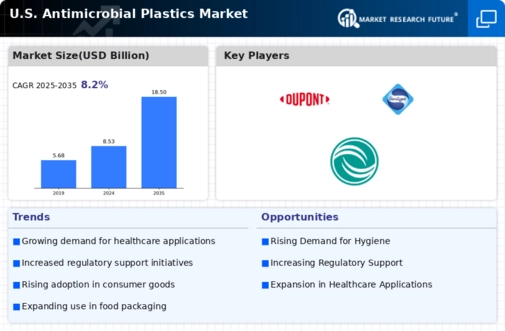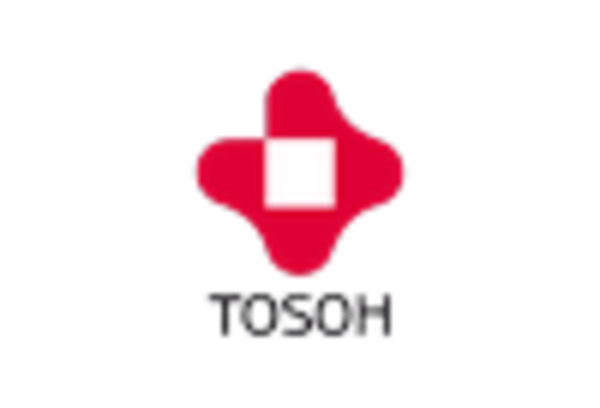Market Analysis
In-depth Analysis of US Antimicrobial Plastics Market Industry Landscape
The US antimicrobial plastics market is undergoing dynamic changes driven by a convergence of factors that impact both the supply and demand sides of the industry. Antimicrobial plastics, incorporating additives or coatings to inhibit the growth of microorganisms, have gained prominence in various sectors, including healthcare, packaging, and consumer goods. The market dynamics are characterized by technological innovations, heightened awareness of hygiene, regulatory considerations, and the expanding applications of antimicrobial plastics.
Technological innovations are a key driver shaping the dynamic nature of the US antimicrobial plastics market. Advances in materials science and polymer technologies have led to the development of antimicrobial additives and coatings that can be incorporated into plastic products during manufacturing. These innovations enhance the antimicrobial efficacy of plastics, making them increasingly relevant for applications where hygiene and microbial control are critical, such as in medical devices, food packaging, and household items.
Heightened awareness of hygiene and infection control is a significant factor influencing the market dynamics of antimicrobial plastics. The global focus on maintaining clean and germ-free environments, particularly in the wake of public health concerns, has led to increased demand for materials that contribute to microbial resistance. Antimicrobial plastics find applications in healthcare settings, where the prevention of healthcare-associated infections is a top priority, as well as in everyday products where consumers seek added protection against pathogens.
Regulatory considerations play a crucial role in shaping the market dynamics of antimicrobial plastics in the US. Regulatory agencies, such as the Environmental Protection Agency (EPA) and the Food and Drug Administration (FDA), oversee the approval and use of antimicrobial additives in plastics to ensure safety and effectiveness. Compliance with regulatory standards is essential for manufacturers to bring antimicrobial plastic products to market, and changes in regulations can impact product formulations and market access.
The expanding applications of antimicrobial plastics contribute to the dynamic landscape of the market. Beyond traditional sectors like healthcare, antimicrobial plastics are finding applications in consumer goods, building materials, and electronics. The versatility of these materials allows for diverse uses, ranging from antimicrobial packaging in the food industry to the incorporation of antimicrobial features in touchpoints such as door handles and electronic devices.
Competition within the market fosters innovation and efficiency in antimicrobial plastics. Companies are continually striving to differentiate themselves by offering high-quality antimicrobial plastic products, exploring new applications, and optimizing manufacturing processes. Collaborations between material scientists, manufacturers, and healthcare professionals contribute to ongoing research and development, driving innovation and influencing the competitive landscape of the antimicrobial plastics market.
Socio-economic factors, including public health concerns, demographic shifts, and lifestyle changes, contribute to the market dynamics of antimicrobial plastics in the US. As society becomes more health-conscious, there is a growing demand for products that contribute to hygiene and infection control. Aging populations and changes in consumer behavior, influenced by the recent emphasis on health and wellness, further shape the consumption patterns of antimicrobial plastic products.

















Leave a Comment